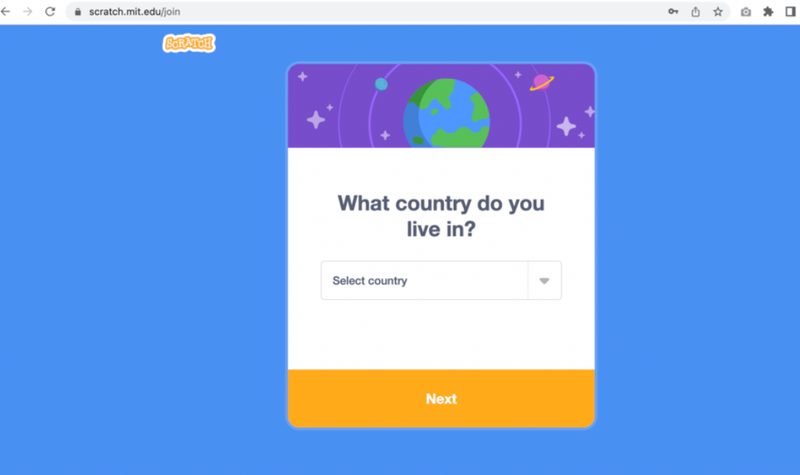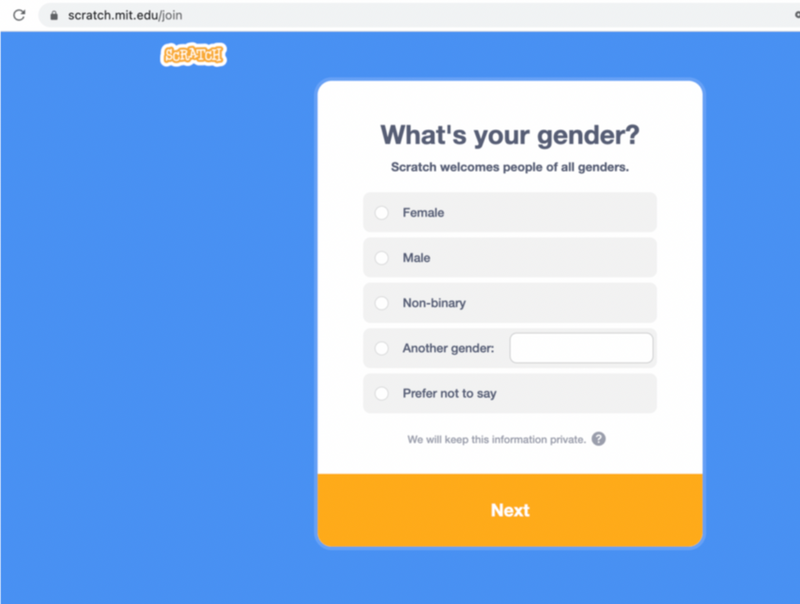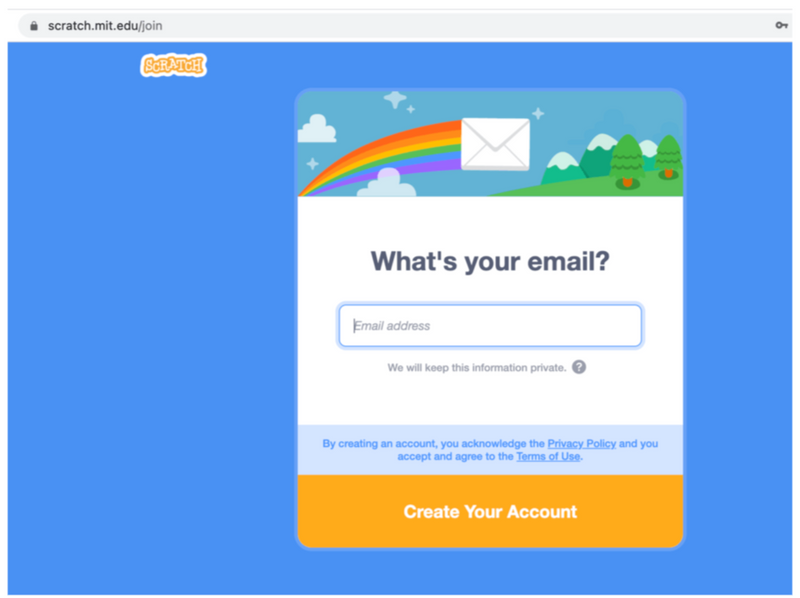As a teacher or parent, you may be wondering how to best get started with coding for middle school students. It can be intimidating to try something new, especially when it comes to technology. But don't worry, we're here to help! Today, we'll share tips and resources to get your child or students started with programming, including free coding classes and resources that will keep them excited to build new skills. Coding is a valuable skill that can help students develop problem-solving and critical thinking skills, and it can also be a lot of fun. We hope this blog helps you navigate the world of coding for middle school students, and inspires you to give it a try.
Start Coding for Middle School Students
Starting to code as a middle school student can be a fun and rewarding experience. Here are some steps you can follow to get started:
1. Identify your child's interests
The best way to start learning to code is to choose a programming language that aligns with your student's interests and age. For example, if they are interested in creating games, they might want to start with a language like Scratch and progress to Python or Java. If they are interested in web development, you might want to start with Wix and Scratch, and progress to HTML, CSS, and JavaScript. We recommend beginning with free Scratch coding first, as it empowers kids to make real games and animations fast, without the hassle of syntax. Here's a quick video that explains the best language for your middle schooler:
2. Find coding resources
There are many resources available online to help your student learn to code, such as tutorials, videos, and online courses. You can also find books on programming at your local library or bookstore.
3. Practice programming
The best way to learn to code is to practice by building small projects. Start your child with something simple and gradually increase the complexity as they become more comfortable with the language.
4. Seek help
If your student gets stuck or has questions, don't be afraid to support them is asking for help. Students can ask their teacher, a mentor, or online communities for assistance.
Remember, learning to code takes time and practice. Don't get discouraged if your child don't understand something at first – keep working at it with them, and they will improve over time.
How to sign up and get started with Scratch
Here are a few simple steps to getting started using the free Scratch coding platform.
1. Create a free account.
Go to Scratch on MIT to sign up for a free Scratch account. Click "Join Scratch" at the top right.

2. Create a username and password.
Consider choosing a username and password that will be easy for your child to remember.

3. Select the country you live in.

4. Enter the month and year you were born.

5. Select your gender.

6. Enter your email address.

Get started creating and exploring with your child! Begin with a fun free tutorial on how to create a game on Scratch. Then progress to more beginner Scratch tutorials such as: how to make a catch game, Mario game, and cross the road game. Advanced coders can try their hands at making a frogger game or making a memory matching game.
For live guidance with Scratch coding, join an award-winning online class taught live an experts and designed by professionals from Google, Stanford, and MIT:
Top Introductory Coding Programs and Websites for Middle School Students
Figuring out where to start with teaching your child programming can be extremely hard if you do not have the knowledge or funds to teach them to their highest ability. Luckily, there are plenty of free and amazing resources and classes that can help your child learn coding to the best of their ability.
Create & Learn Classes
Create & Learn’s live online classes are a great fit for any student. Select from 30+ computer science subjects rated 5-stars by parents and students. With an award-winning curriculum recognized by Minecraft Education, HulaFrog, SMASH, and more, you can be confident your child is going to get the best learning experience possible. There are also numerous free introductory classes to see if each area of interest is a great fit for you and your child!
Grades: K-12
Format: Live online classes led by an expert
Pros:
- Award-winning curriculum.
- Classes for all ages.
- Small class size (5 students max)
Cons:
- You may need to schedule far out due to classes being full.
- May need high-speed internet for Zoom and other programs to function properly.
Teachers - you can also book free virtual coding classes for your group of students, any time of the year! We serve all schools and community organizations. Try our activity classes listed here for groups of 10+ students. Just pick the subject you're interested in and contact us. We'll get in touch to get you all set up for your free live Zoom sessions.
2. Code.org
Code.org has helped over 70 million students learn the valuable skill of coding. The innovative non-profit is dedicated to ensuring every student in every school has the opportunity to learn awesome computer science skills. Their free platform provides a number of informational video tutorials, and on-demand video courses in robotics, making apps, AI, and more.
Grades: K-12
Format: Self-paced tutorials and videos
Pros:
- All of the materials are free.
- Easy access to any tutorial.
- Allows students to work at their own pace.
Cons:
- Lack of guidance. Without guidance, students might choose activities at random instead of following the scaffolded curriculum.
- Young students definitely need a mentor, teacher, or parent to help teach them the curriculum.
3. Khan Academy
Khan Academy is a nonprofit organization with the mission of providing free, world-class education for everyone. They use practice exercises, videos, and a learning dashboard to help students learn at their own pace. They focus on a multitude of topics so computer science is not the only focus of Khan Academy. Their main focus is skill mastery to help learners establish strong foundations, so there's no limit to what they can learn next.
Grades: K-12
Format: Self-paced videos
Pros:
- All of the videos are free.
- Easy access to any course.
- Multiple subjects to choose from (other than computer science).
- Allows students to work at their own pace.
Cons:
- Less interactive than having a tutor or teacher over Zoom.
- Only exposed to one teaching style.
- It can only instruct and not inspire and guide students.
Discover the Best Middle School Coding Curriculum
A computer science curriculum is extremely helpful for students. First, computer science is a rapidly growing field with a wide range of job opportunities, and a strong foundation in computer science can help students prepare for these careers. Additionally, computer science skills are becoming increasingly important in many other fields, such as business, healthcare, and entertainment, and a computer science curriculum can help students develop the skills they need to succeed in these fields as well.
Beyond helping students prepare for future careers, a computer science curriculum can also help students develop important skills such as problem-solving, critical thinking, and creativity. These skills are useful not just in computer science, but also in a wide range of fields and can be beneficial for students as they continue their education an embark on their professional lives.
The curriculum for middle schoolers at Create & Learn is specially designed for students to gradually learn computer science, while always using real-world applications and examples that bring the material to life in unforgettable ways. Beginner, intermediate, and advanced courses, designed by professionals from Google, Airbnb, Apple, MIT, and Stanford, help your child build skills progressively, while showing how much your student has achieved along the way. With guidance from expert instructors using an inquiry-based method of instruction, your middle schooler will create a number of projects they'll be proud of, while building an in-depth understanding of the logic behind them. Not only is there a curriculum to follow, but also there are helpful popular learning pathways to select from, that can set your child up to learn based on their specific interests - providing a similar experience to picking a major in college.
Best Coding and Computer Science Classes for Middle School Students
Explore some of the most popular coding classes for middle schoolers, from beginner programming, to making their own websites, through to learning how to harness the gaming engine behind hugely successful games such as Angry Birds.
1. Accelerated Scratch Course
This compressed series of Scratch coding classes introduces students to all of the key coding concepts in a handful of sessions and prepares them for more advanced computer science courses. In this class, middle schoolers practice core coding concepts, and build many impressive projects in just under an hour each class. You'll see your student's confidence and interest in coding soar as they build interesting games, animations, and more!
2. Arduino Coding Course
With a world surrounded by smartphones, computers, and TVs, students want to build things similar to what they use in their day to day lives. Arduino coding opens up the possibilities for your child to learn electronic systems for alarms, home sensing, motor controls, and much more. While lots of students have learned to code, few have had the opportunity to build a physical system, which opens up a brand new world.
3. Mobile Coding for Apps and Games
Kids love mobile apps and games so why not get them to make their own? This class allows students to learn to code mobile apps in small, live group sessions. The use of Thunkable (a block-based programming language) helps kids who are not confident in written-based coding to make awesome projects. After finishing the class, your middle schooler will be more than comfortable with building a plethora of mobile games and apps!
4. Beginner Roblox Coding Class
If your child loves Roblox then why not get them learning important computer science skills with it? In this fun live virtual class students will learn the foundational coding skills to create their own games in Roblox, the popular gaming platform with over 40 million games! This class is designed for students to become equipped with foundational Roblox coding skills using block coding, and without having to learn complicated Lua syntax. Students will make a dodgeball game, and even a game modeled after the highly popular infinity run game where players must turn, dodge, and jump to avoid obstacles and gain points.
5. Python for AI Class
Python is a high-level coding language used by companies such as Netflix and Google, and it is also used for web development, game development, building apps, machine learning, and so much more. Studies have shown programming with Python to be one of the simplest and most popular coding languages when learning to code. If you want your student wants to learn a real-world programming language, this is the best next class to take.
There's also a free artificial intelligence class your student can try to see if it's a field they might be interested in learning more about.
6. Website Design with Wix Class
Whether it is for their robotics clubs, community service, or to create their own portfolios to enter auditions and competitions, students find many places to use website building. This class uses Wix, a popular free website builder to learn the basics of web development without the hassle of learning how to make it from scratch.
7. Data Science with Python and Pandas Class
Data analytics is critical to the success of modern businesses, and can be really fun to learn for teens. No matter whether your student wants to become an entrepreneur, a lawyer, a journalist, a doctor, or an engineer, it is important for them to gain the power to analyze and utilize and the data to gain business insights and make decisions. This class is perfect for the middle school student who wants to further their education and have fun doing it.
8. Unity Game Development Class
Plenty of kids love video games and their dream is make their own. You can make that dream come true in this awesome video game course that is made to allow teens to build amazing video games. This series of Unity classes teach students the core techniques of developing both 2D and 3D games in Unity. It covers a wide range of topics from character control, coding (in C#), to asset management.
How to Teach Middle School Students Coding
Here are some tips for getting kids interested in coding and helping them stay excited about it in the classroom:
- Keep it fun: Incorporate games and interactive activities into your lessons to keep students engaged and motivated. Kids can even participate in coding contests.
- Show them how it's useful: Help students see how coding can be applied in the real world, whether it's through projects that address real-world problems or by showcasing examples of how coding is used in different industries.
- Encourage collaboration: Encourage students to work together on coding projects, as this can help them learn from each other and build on each other's ideas.
- Offer support: Make sure students have access to resources and support when they need it, whether that's through one-on-one help or online resources.
- Make it relevant: Connect coding lessons to students' interests and passions to help them see the relevance and value of what they're learning. Help them learn how to make things they want to make, such as easy games to code.
Get Started with Coding for Middle School Students
Now you and your tween will know how to get started with coding for middle school students! You have free classes, resources, and a great guide on how to teach students programming. Up next, learn ways to get on college mailing lists.
Written by Create & Learn instructor Gabrielle Cindric. Gabrielle is a Computer Science student by day and a STEM instructor by night. In her free time, she enjoys playing video games and hanging out with her poodle Bailey and cat Asphalt.




